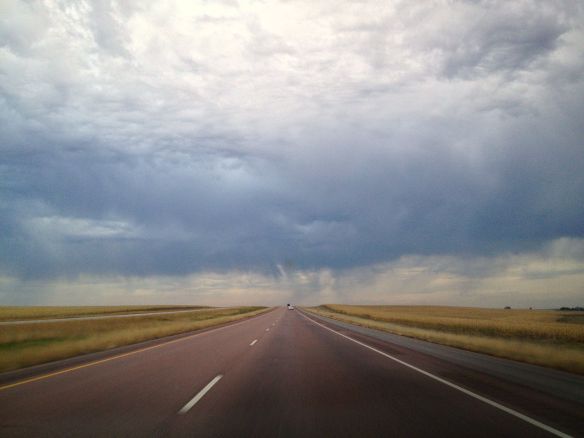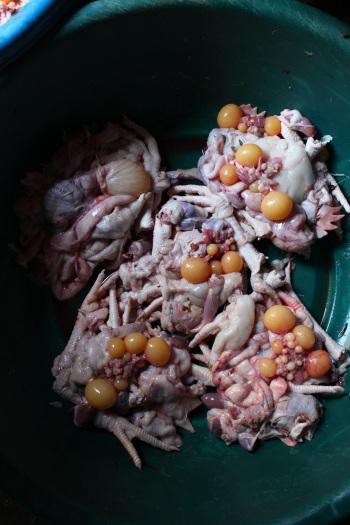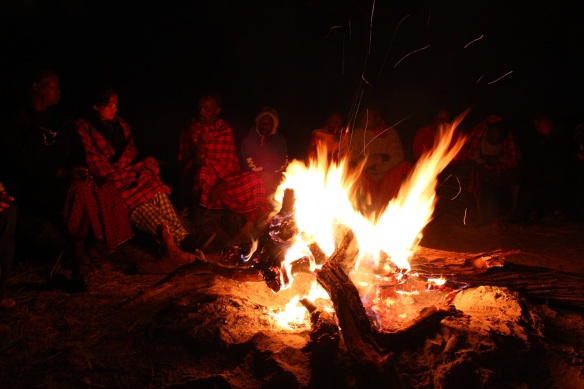It appears, dear readers, that my prolific blogging (well, for me at least) was actually a procrastination technique to avoid my thesis. Since turning in my thesis, I apparently have enjoyed staying away from writing on my computer. However, I’m at a time now where an update is both overdue and necessary for my brain to work through everything that’s going on right now.
I just spent five nights on Zanzibar, which easily knocked its way up into the top five most amazing places I’ve ever seen. I returned to Dar today, straight from the 7am ferry leaving Stone Town to the office (but hey, now I can say I once commuted to work from Zanzibar). To be honest, I wasn’t hugely productive today – both as a result of waking up exhausted/a little sick and the reality of my last week here smacking me in the face. It is now time to consider the trip home… what I need to do before then, who I need to pay, what I need to write, how on earth am I going to fit all of this in my bag, etc. The life I left behind is beckoning, and with it that bittersweet quality that all journeys end with.
For now, however, I want to go back a few days…when the present moment was all that mattered. I met a woman in Jambiani who reminded me of every beautiful thing about solo travel. Her name was Meja, and I found her sitting in the small pools in the sand left at low tide in her village of Jambiani. Located on the southeast coast of Zanzibar, Jambiani is home to not only incredible beaches, but to a seaweed farming industry as well. “Industry” is probably not the right word, however, as it consists of small plots, maybe 20ft x 20ft(ish), that women in the village tend to each day. Putting sharpened sticks in the sand and tying twine between them, they make rows where the seaweed grows in small bunches, much like a head of lettuce. They tie a small piece of seaweed onto the twine with another small piece of rope, and then wait for it to grow to harvesting size, which takes about one month. Once harvested, they take it home to dry and then wait to collect enough to give to locals who make the drive to the markets in Stone Town, about 2hrs away. Once all is said and done, a woman will receive about 400 Tanzanian shillings, or roughly 25 cents, for each kilo of dry seaweed.

Rows of seaweed line the shallow pools left at low tide in Jambiani. Photo by Gemina Garland-Lewis.
I only know all of this because of Meja, who was one of the only women game for chatting and picture-taking. I met her on my first day in Jambiani – a day when I had only taken my iPhone for a camera when I went out exploring. Upon meeting her at her seaweed plot, I knew I had to come back again to shoot her for real (photographically speaking, of course). I asked her in Swahili if she would be in the same spot tomorrow, and was quite smitten when she said yes.
Fast forward 24 hours and I am back with Meja. After talking a little, I ask her to write her name for me so I know how to spell it. She takes one of the sticks used to tie the twine for seaweed that has been left sitting out, and sketches her name in big block letters in the unbelievably white sand. She asks me to do the same, and so there are our names written together in the sand, to be washed away when the tide returns. Although I attempt some Swahili with her, it is clear that her English is very good, so I allow myself to speak in my native tongue and ask her everything I really want to. She shows me how ties the seaweed, then unpacks the bag she has filled with her harvest for the day to show me how much she has and how little it will turn into when it dries. I learn that the Swahili word for “seaweed” is “mwani”, that she is 25 years old, and that she neither has children nor is married – unusual for a woman of her age generally. I complement her English and ask her where she learned to speak so well, to which she replies that she always had it in school. When I ask how long she was in school, her answer of fourteen years makes it a little clearer (statistically speaking, at least) as to why she is unmarried at her age – as a woman’s education level is raised, so is the age at which she marries, generally.

Where I met Meja, tending to her seaweed plot. Photo by Gemina Garland-Lewis.
We keep talking, sitting in the ocean with our wet kangas, until she is done with her seaweed tasks for the day. She tells me that she is going to go cook cassava now, and asks if I would like to come. I have not yet been invited into anyone’s home, except for work colleagues, and I eagerly accept the gracious offer. She grabs the bag we emptied (and refilled) earlier while I try to guess just how heavy it is right now while still filled with wet seaweed – African women have a way of making heavy loads look like child’s play, filled with the quiet strength of years upon years of experience. Meja attempts to redo the kanga she is wearing to cover her hair while still carrying the bag. My offer to help gets me one side of the bag, which we carry between us in the middle, at least until she finishes wrapping her hair and decides to take the bag back.
We walk on the sand that will be covered in surprisingly deep water in but a few hours when the tide comes in, then hit the beach and start to wander back through the small stone houses of the village. It is clear from the children’s reaction that not many mzungu wander back this way – usually we are at the beach working on our tans/burns. We arrive at her house and she takes me to where she spreads out her seaweed to dry, showing me the considerably smaller pile of dry seaweed from her harvest a couple days ago. I can’t even imagine how much seaweed it must take to come out with a kilo, and for only 25 cents at that.
Walking through the entrance to her house, I see her sister and mother and am welcomed by them. I am provided with a seat and a very chilled bottle of water, which ticks off a little “refrigerator” box in my head that comes from having read so much about poverty indicators for my internship. I watch Meja’s sister sit on the ground and work on her embroidery while her two-year-old daughter collapses with exhaustion in her mother’s lap. Soon after falling asleep, the young girl starts to pee all over her mom and the mat she is working on. She is still asleep when Meja brings water to clean her, waking only briefly when the cold liquid is poured all over her genitals. She has a look on her face that makes me laugh, knowing that’s not a way I would particularly care to wake up, either.

Meja stands over the seaweed she has just brought back from her plot today. It will dry to about a quarter of its current size. Photo by Gemina Garland-Lewis.
I am then brought food to eat, and instantly I am both grateful and worried. I’m guessing that as a visitor, and an mzungu one at that, that I’ll be given something particularly nice, which here means meat. I look closer at what is hiding in the red sauce and realize it’s octopus. Grateful at least that it’s not red meat, which I would have to turn down, I accept that this will be one of the handful of moments over my many years as a vegetarian traveller that I allow myself to eat an animal in the name of being culturally appropriate, and look gratefully at my hosts (at the four chunks of cassava provided, too). I rinse my hands with the small bucket of water they’ve provided, knowing that they will be my only eating utensils for this meal. My body instantly knows I am not supposed to be eating this, and I struggle to consume enough to be polite. At the point at which I’ve downed three four-inch legs and almost all of the cassava, I start to gag. I’ve always thought it better to pass on someone’s kind offer of food than to throw it up in their house, and luckily at that moment Meja starts a new project so intriguing that I am able to act as though the only thing preventing me from finishing my meal is that I want to see what she’s doing (which I suppose is partly true).
What Meja has brought out is a contraption I’ve never seen before – a folding chair that opens wide and sits low to the ground, made of two pieces of interlocking wood. The really cool thing is that it has a circular serrated blade protruding from one end, which I have no inkling as to its use. Meja returns with a bowl of coconuts she has split in two, then sits sideways on the chair and starts to grind out the meat using the curved razor. I watch with a huge smile on my face – it had never really occurred to me how people grate coconuts – and explain that this is not something you’d ever see in America. As chickens pop in and out of the house and one chick comes to pick at the empty coconut shells, I ask her how many she has. She and her sister confer and come back saying they have no idea, which is not entirely surprising. Village chickens wander freely during the day (and I mean freely, like, anywhere in the village they want), and, although they come back at night, aren’t often provided with a roost or coop to spend the night in. When I see the goats, I ask her what they’re used for – milk, meat, or market. While she says all three, the most important is selling. I confirm what I’ve been reading in the literature that women are not allowed to sell goats – this is men’s work – and also that women are able to sell chickens without prior approval from a man. Everything has a gender role here.

My favorite new contraption – a folding chair made just for scraping out coconut meat. Photo by Gemina Garland-Lewis.
Once the coconuts have been fully cleaned out and I have explored their goat house, Meja invites me into their kitchen to watch her cook. It’s a stand-alone building about fifteen feet across and seven feet wide. A variety of pots sit on small stoves, fueled only by fire and charcoal. Meja starts to put the coconut into a blender (ticking another wealth indicator box in my head) and mixes it with water, explaining that before they had the blender it would take forever to squeeze out the coconut meat for milk by hand and that the yield was never as great. She takes some of the milk out to her sister, who is cooking rice, and then pours some in the cassava and sweet potatoes she’s cooking. I watch as she pulls some whole spices out from glass jars, grinding them in a makeshift mortar and pestle made out of a stick and half a coconut shell. She holds up one of the seeds and asks “cardamom or cinnamon?” I respond “cardamom,” simply blown away by her English. She throws the spices in the pot and my nose takes a great liking to what’s on the stove. As we talk, I realize I’m having a hard time figuring out if I’m asking questions like a development worker, a journalist, a traveler, or a peer. Story of my life, I guess. I learn that there are ten people living in her house, including her, that her chickens lay eggs in a dark corner of the kitchen, that octopus is eaten on special occasions, and that her sister’s marriage is falling apart – “she got five years,” she says, which sounds to me more like a prison sentence than a marriage anniversary.

The smell of cardamom and black pepper waft out from the cassava and sweet potatoes cooking in freshly procured coconut milk. Photo by Gemina Garland-Lewis.
As she finishes her work I stand to go, partly not wanting to impose anymore, partly wanting to go take some more pictures on my last day in Jambiani, and partly not wanting to stay long enough that I am offered another meal, kind-hearted as it may be. She says it’s time for her to shower and relax, so I think it’s a good breaking point for both of us. I thank her profusely for inviting me to her home, answering all my various questions, and letting me photograph her all along the way (and for the food, of course). When I ask her if there is any way to get mail in her village, she says no. Guess I’ll just have to come back and personally deliver a photograph… someday.
When I get back to my beach house, all the other guests are laying in the sun, just like I left them. To be fair, I did my share of that as well, but meeting Meja reminded me that the best experiences are always the ones that come from being a traveler and not a tourist – a distinction which we discuss at length with every National Geographic student group. It’s amazing how humbled and grateful you can feel when genuine and unplanned interactions allow you to connect with what’s truly around you.

Making connections between different worlds. Photo by Gemina Garland-Lewis.



































